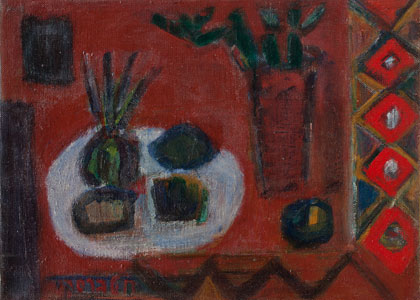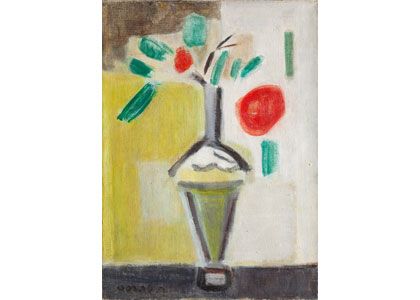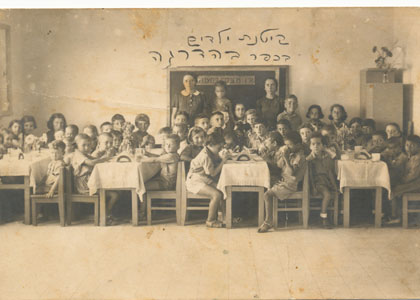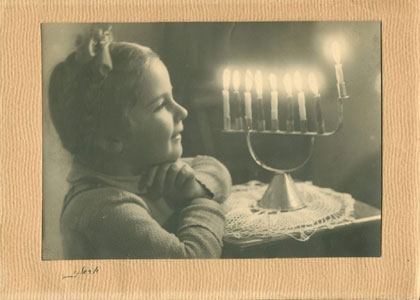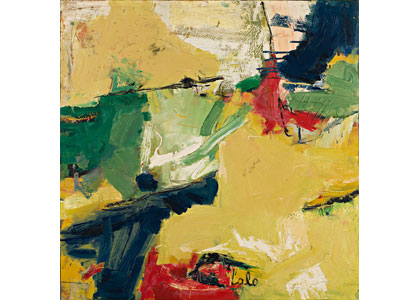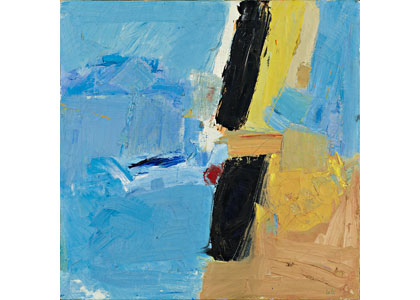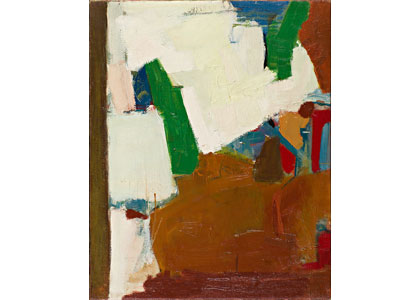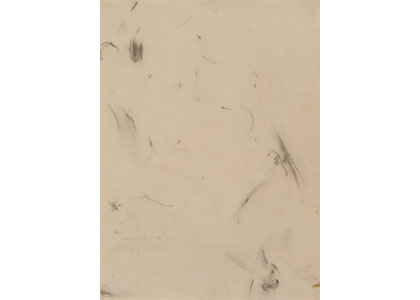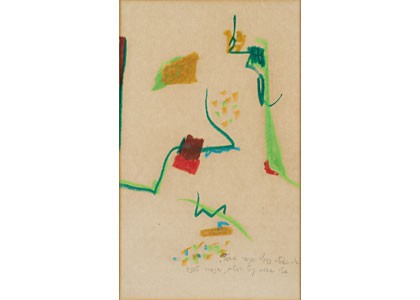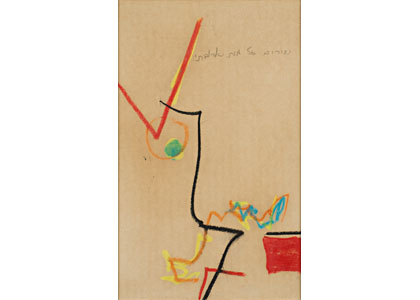Forgotten
Curator: Sigal Kehat Krinski
13/02/2014 -
05/04/2014

Until the 1970s women in Israeli art were scarce, and their part in determining the nature of the local artistic currents was relatively minor.1 Female history “trailed behind” male history or was, at best, intertwined with it. Women could thus take their place in one of two possible realms: some assimilated into the establishment and therefore cannot be discussed separately from their male colleagues, who usually established and led the key groups in local art; others operated on the margins, each on her own, outside the known artistic groups in Israeli art.
The exhibition gives a platform to three women artists whose works are included in the collection of Petach Tikva Museum of Art; two painters and one photographer-painter. In real time, all three had little impact on the local artistic practice, but today, in retrospect, it seems that each one in her respective field was unique and innovative for her time.
Chana Twersky (1900-1969) eschewed fashions; she created a one-woman school of sorts which manifested itself in her solo exhibitions. Her idiosyncrasy lies in her stubborn aspiration for what she termed the “all-encompassing”—namely, the abstract. In this she preceded the geometric abstract wave that flooded Israeli painting in the 1970s by several years, at the time alone in her path. Her geometric painting is far from cold; it is restrained yet lyrical. To some extent, Twersky followed in the footsteps of Mondrian, infusing his practice with her own traits. She often used basic geometric forms and elliptical shapes, and complemented the use of the basic colors red-blue-yellow, combined with black-and-white, with other hues, primarily violet, gray, green, and orange.
An impressive collection of her works, approximately 90 of them, is in the museum’s collection. Two years ago it was supplemented by her sketchbooks and notebooks, in which she reveals her intellectual reflections, underscoring her as a lover of culture who would later be described by Gabriel Talpir as “one of the most fascinating intellectuals in the local art circles, who could articulate her ideas not only by means of the brush but also in critical essays about artistic concerns in our times.”2
The exhibition juxtaposes abstract and semi-abstract works by Twersky to highlight her attempt to transform figures into forms, to reach what she called “purity.” Her internal struggle to obtain that purity was manifested in her drawing away from the objects and details and attempting “pure drawing,” which she perceived as “minimum means, maximum mental stir,” and which, according to her notes, “only a few, even in our time, ever obtained.”
Hagit Lalo (née Shtreit) (1931-1961) was exposed to painting when she left for education studies at Berkeley College, the University of California, where she was drawn to art studies and even completed an MA in this field (1952-56). Upon graduation she studied under Hans Hofmann, one of the forerunners of Abstract Expressionism. Artistically, her work is associated with American art of the 1940s and 1950s, and is influenced both by the San Francisco School which emphasized coloration, and by the New York School for which spontaneous personal expression was of topmost importance. Returning to Israel in 1958 she brought Abstract Expressionist painting with her. In Israel she knew many disappointments and was not embraced by the artistic establishment. Her painting indeed differed from that prevalent at the time. Her unique color work and vivid coloration as well as the sensual-emotional expression, which do not yield to the “lyricism” typical of the painterly abstract of New Horizons, opened the door to fresh, unmediated painting, unprecedented in Israeli art.
Her painting opens up to mentalscapes and an enhanced emotional experience which stems from an intricate sensibility. It is an abstract painting whose gestures are free and broad, unyielding to the fine painterly processing prevalent in Israeli art at the time. In the few years of her artistic life, cut short by her untimely death, she addressed issues pertaining to the structure of the composition, the interrelations between the dynamic forms comprising it, and their affinity with the perception of the painterly space.
Esther Zamasky (1909-1978) founded the Armoni Photography Studio in Petach Tikva in the 1930s. She painted the northern wall white to create unique lighting. Her photographic portraits indicate the influence of new German and Russian avant-garde photography, with its unusual shooting angles, the use of contrasting lighting, etc. In this she preceded well-known leading local photographers, such as Helmar Lerski, who imported these trends and assimilated them into local practice. To highlight this innovative facet of Zamasky—whose paintings from her studies in Zwi Shorr’s studio had indeed been presented in museum exhibitions in the past, but never her photographs—the current show juxtaposes her photographs with similar photographic images by Lerski. In addition, the exhibition features other experimental aspects in her work, such as “scorching” the photographic image by inundating it with light, cutting the image and gluing it to a neutral backdrop.
Zamasky’s daughter deems her mother a “feminist,” recounting that in the mid-1930s she operated to establish a women’s organization for equal rights in Petach Tikva, hoping to heighten awareness among the city’s women of their status.3
Notes
1. Ruth Markus (ed.), Women Artists in Israel, 1920-1970 (Tel Aviv: Hakibbutz Hameuchad, 2008), p. 11 [Hebrew].
2. Gabriel Talpir, “Deceased Israeli Artists,” Gazith 26: 1-8 (1969), p. 145 [Hebrew].
3. The interview with Ms. Yael Maor (Zamasky’s daughter) was held on November 26, 2012. Courtesy of the Oded Yarkoni Archives for the History of Petach Tikva (Director: Galia Duvidzon,
In charge of special collections: Noni Yaron, and Nati Malakhi). Editing: Media Tikshoret Petah-Tikva




